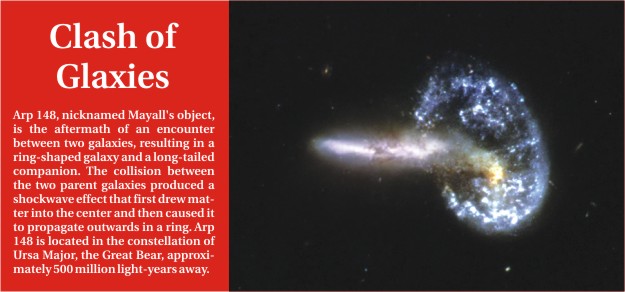Science Feature
Phoenix Lander's Memorial Day on Mars
 A NASA orbiter caught this view of the Phoenix Mars Lander parachuting toward the Martian arctic surface on May 25, 2008. A NASA orbiter caught this view of the Phoenix Mars Lander parachuting toward the Martian arctic surface on May 25, 2008.
Phoenix landed on Mars late Sunday, touching down on the arctic plains of Vastitas Borealis and beaming its first signal back to Earth, which mission controllers picked up at 7:53 p.m. EDT (2353 GMT). So far, the spacecraft is in good health.
But it was during Phoenix's seven-minute plunge through the Martian atmosphere that NASA's Mars Reconnaissance Orbiter caught this view of the lander dangling from its precious parachute. It is the first-ever view of a spacecraft landing on another planetary body.
The 30-foot (10-meter) wide parachute is the white object on the right, with its connecting chords running to the Phoenix lander's back shell to the lower left. The parachute appears to be fully deployed.
"This is an engineer's delight," Phoenix project manager Barry Goldstein said in a mission update today at NASA's Jet Propulsion Laboratory in Pasadena, Calif. "When this was first proposed, I was very skeptical."
MRO caught this view of Phoenix from an altitude of about 472 miles (760 km) using its High Resolution Imaging Science Experiment (HiRISE) camera.The HiRISE recorded this image on May 25, 2008, at 4:36 p.m. Pacific Time (7:36 p.m. Eastern Time), NASA officials said. It is a highly oblique view of the Martian surface, 26 degrees above the horizon, or 64 degrees from the normal straight-down imaging of Mars Reconnaissance Orbiter, and has a scale of 0.76 meters per pixel, they added.
MRO was one of three Mars-orbiting spacecraft to watch over Phoenix's landing on the red planet. NASA's Mars Odyssey and Europe's Mars Express spacecraft also monitored the landing to serve as data relays for the Phoenix lander.
Phoenix's $422 million mission is aimed at digging beneath the frozen Martian arctic for water ice, then testing it with onboard ovens, a wet chemistry lab and other instruments to determine if the region could have been habitable in the past for primitive life. The spacecraft is expected to perform for 90 Martian days, or sols.

| 